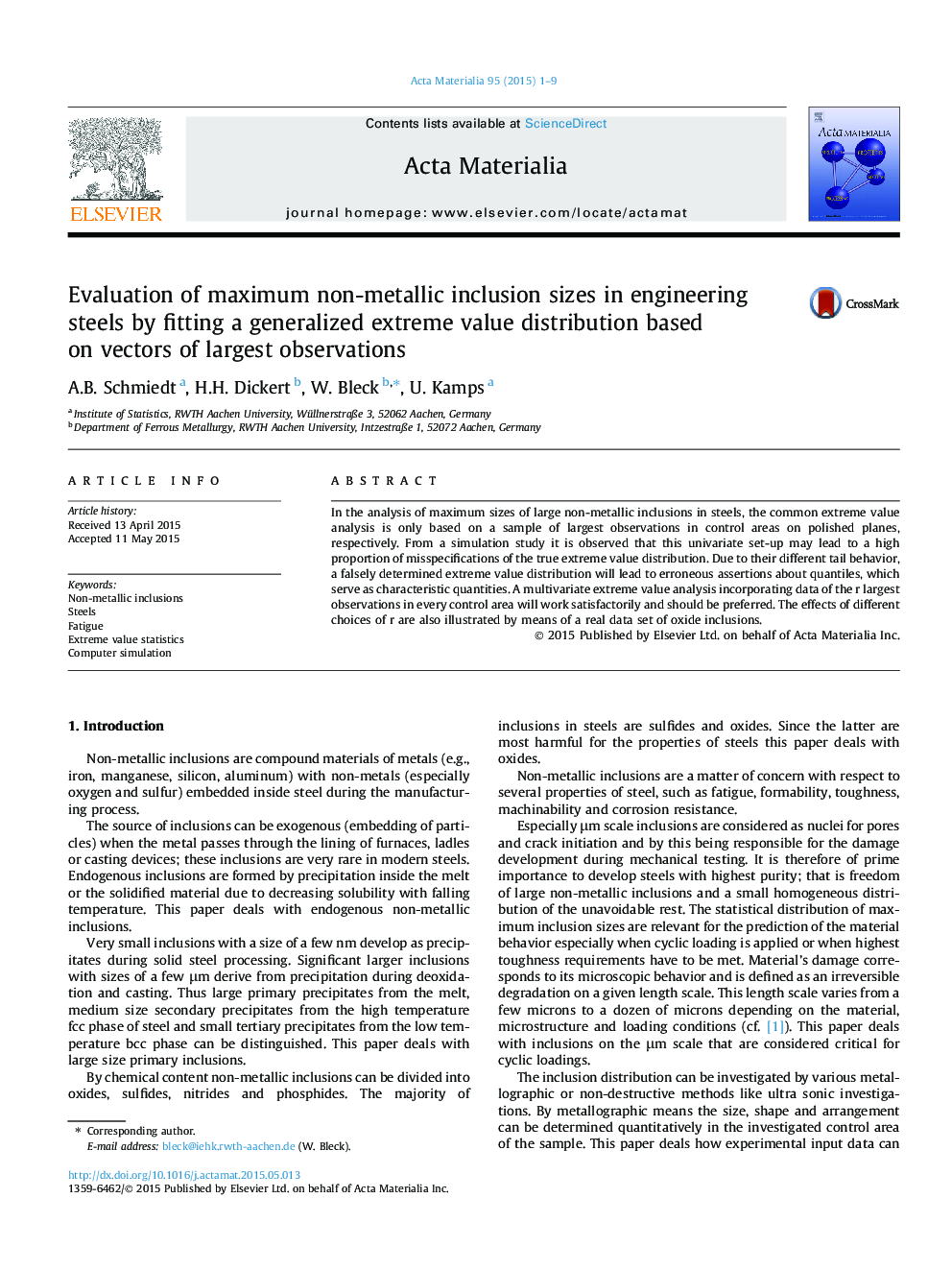| Article ID | Journal | Published Year | Pages | File Type |
|---|---|---|---|---|
| 7879663 | Acta Materialia | 2015 | 9 Pages |
Abstract
In the analysis of maximum sizes of large non-metallic inclusions in steels, the common extreme value analysis is only based on a sample of largest observations in control areas on polished planes, respectively. From a simulation study it is observed that this univariate set-up may lead to a high proportion of misspecifications of the true extreme value distribution. Due to their different tail behavior, a falsely determined extreme value distribution will lead to erroneous assertions about quantiles, which serve as characteristic quantities. A multivariate extreme value analysis incorporating data of the r largest observations in every control area will work satisfactorily and should be preferred. The effects of different choices of r are also illustrated by means of a real data set of oxide inclusions.
Related Topics
Physical Sciences and Engineering
Materials Science
Ceramics and Composites
Authors
A.B. Schmiedt, H.H. Dickert, W. Bleck, U. Kamps,
